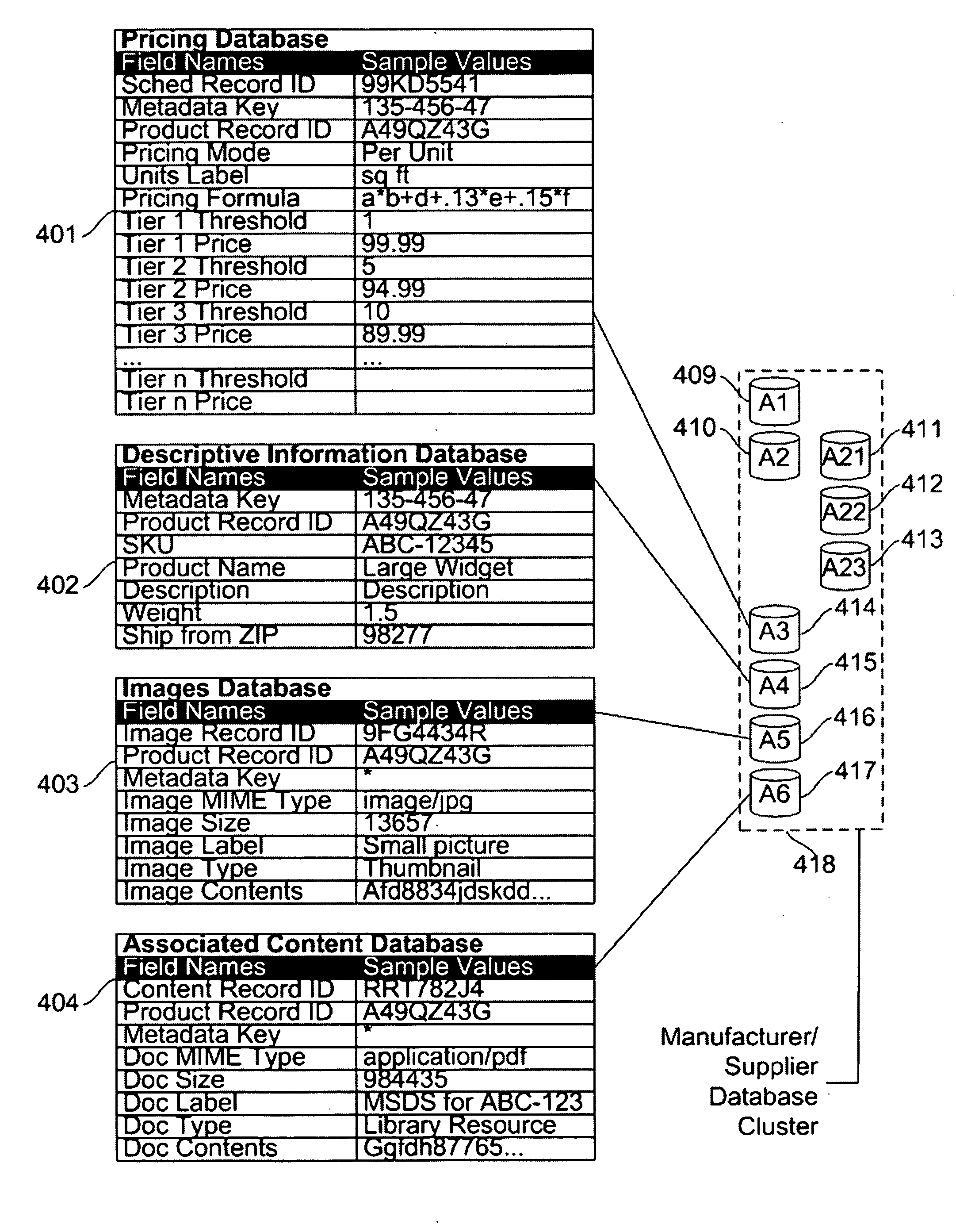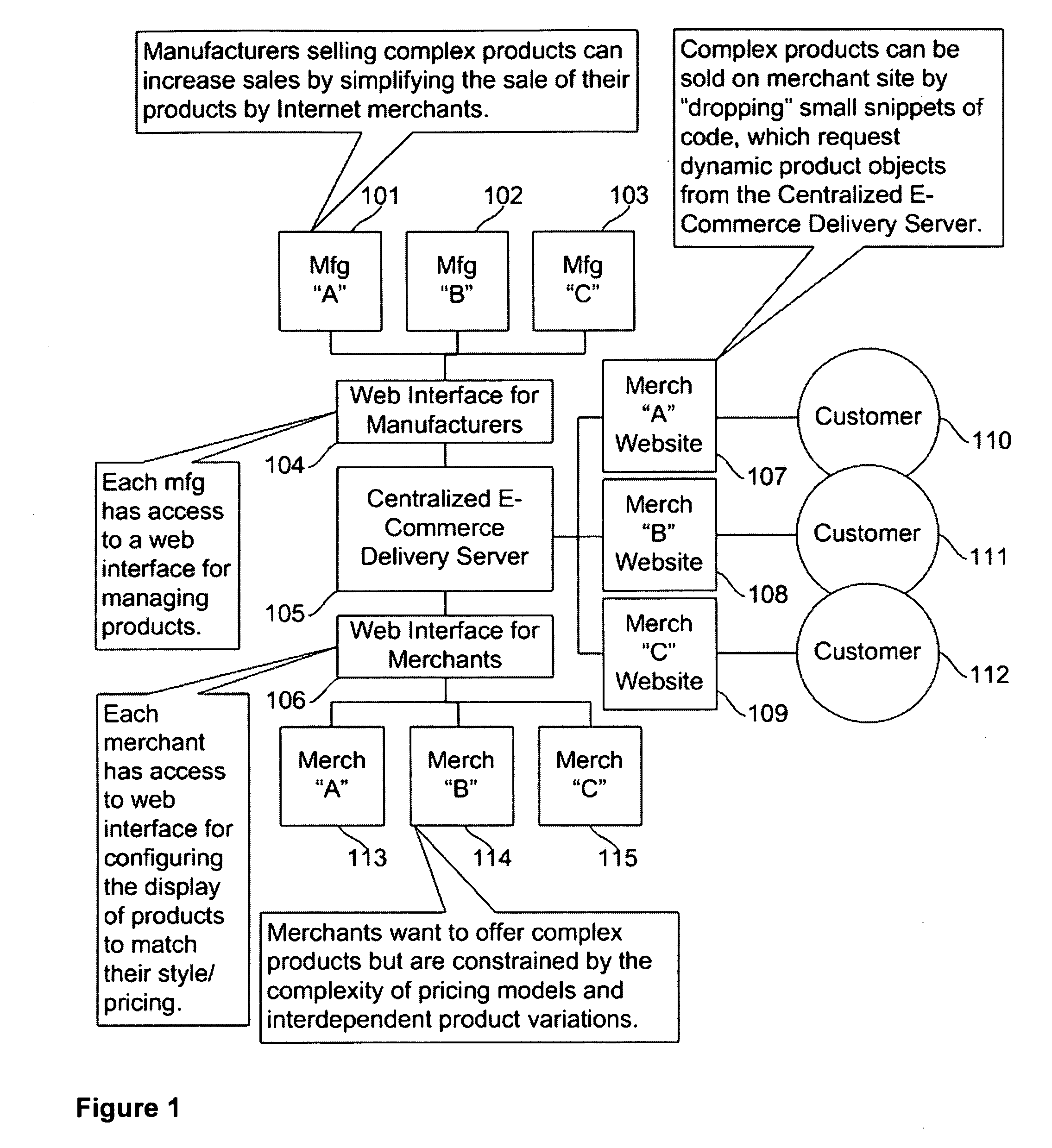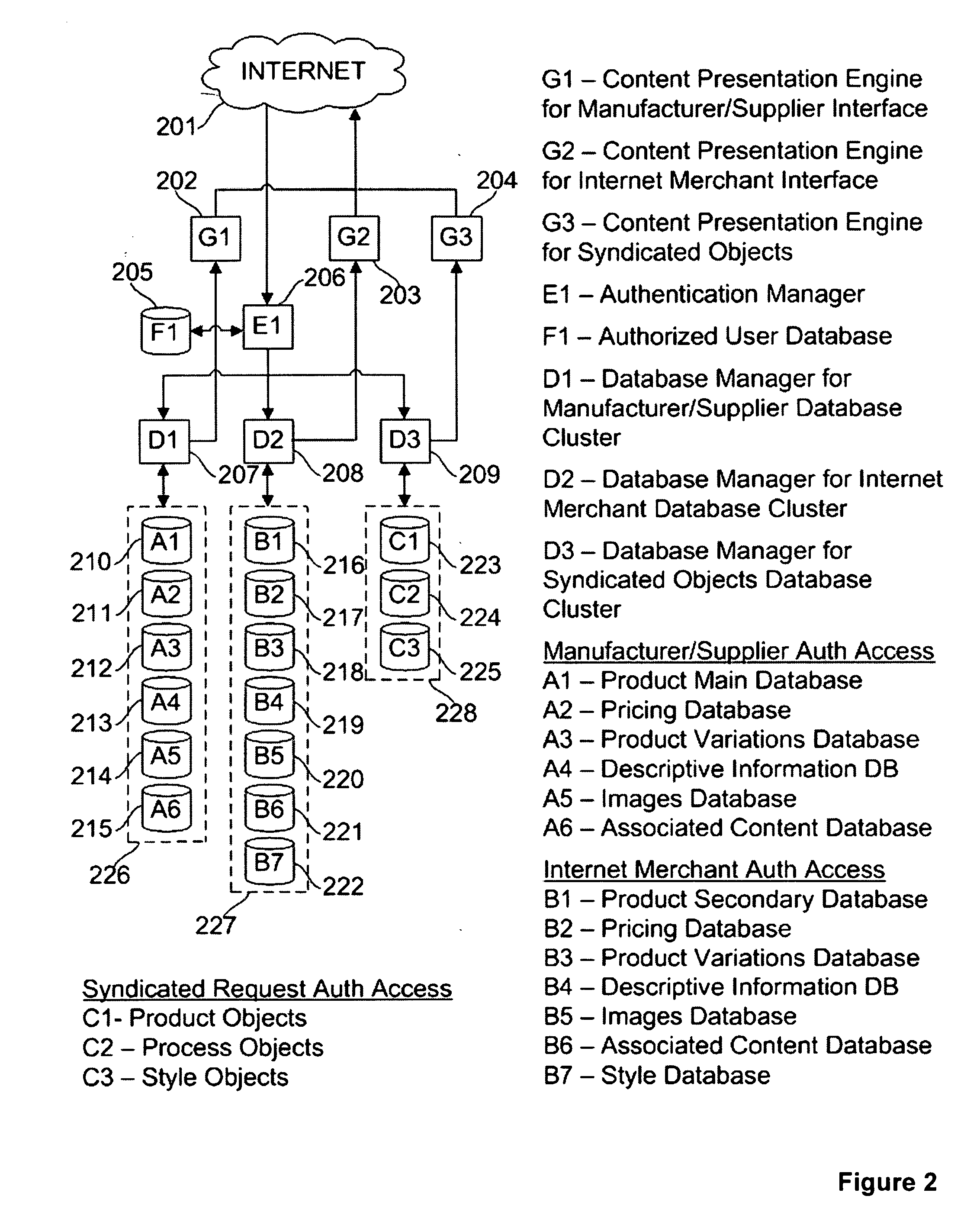Method and System for Selling Complex Products on a Distributed Network Using Syndicated Services
a technology of distributed network and complex products, applied in the field of computer systems, can solve the problems of inefficient and inconvenient use of existing methods, difficult implementation of associative behavior with existing methods, and inability to meet the needs of customers,
- Summary
- Abstract
- Description
- Claims
- Application Information
AI Technical Summary
Benefits of technology
Problems solved by technology
Method used
Image
Examples
Embodiment Construction
[0062]For the purposes of organizing the description of the overall system, the description of a preferred embodiment is separated into the following sections: System Architecture, System Data Model and System Functionality.
[0063]System Architecture
[0064]Referring to FIG. 1, a product syndication system is shown for storing product records in a central computer 105, delivered upon request to users 110, 111 and 112 viewing an HTML document (web page) located on merchant web sites 107, 108 and 109. The schematic shown in FIG. 1 shows the product syndication system as would be used in a preferred embodiment by three manufacturer / suppliers 101, 102 and 103; three merchants 113, 114 and 115; and three customers 111, 112 and 113; in actual practice, many more merchants and users are able to simultaneously use the system.
[0065]Access to the product syndication system is provided to manufacturers and suppliers via a web-based interface 104, which allows them to add, manage and remove produc...
PUM
 Login to View More
Login to View More Abstract
Description
Claims
Application Information
 Login to View More
Login to View More - R&D
- Intellectual Property
- Life Sciences
- Materials
- Tech Scout
- Unparalleled Data Quality
- Higher Quality Content
- 60% Fewer Hallucinations
Browse by: Latest US Patents, China's latest patents, Technical Efficacy Thesaurus, Application Domain, Technology Topic, Popular Technical Reports.
© 2025 PatSnap. All rights reserved.Legal|Privacy policy|Modern Slavery Act Transparency Statement|Sitemap|About US| Contact US: help@patsnap.com



